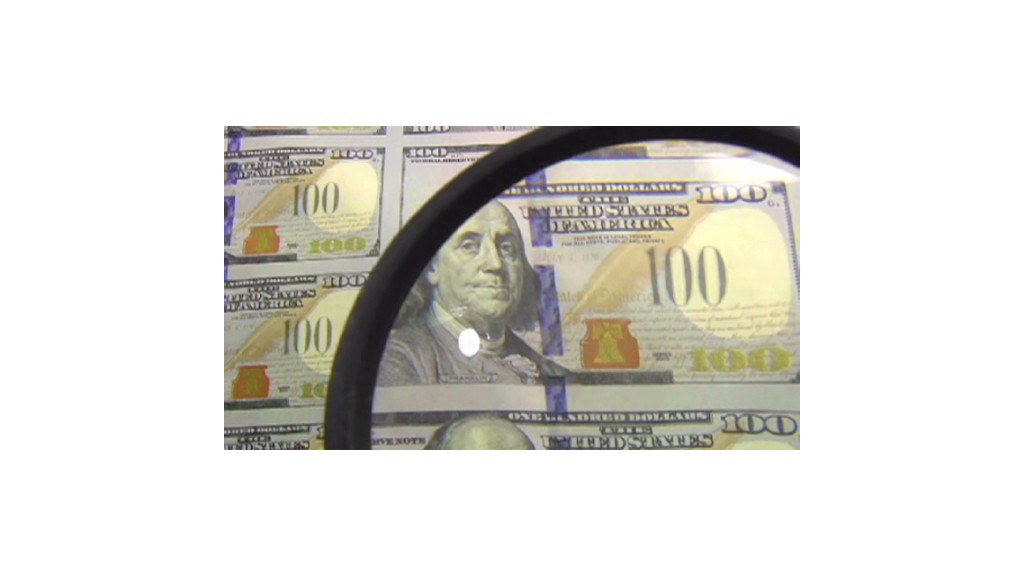
The new $100 bill made its debut today, several years later than originally planned.
The bill was originally due to reach banks in 2011. But three years ago the Federal Reserve announced that a problem with the currency's new security measures was causing the bills to crease during printing, which left blank spaces on the bills.
The bill's belated debut has nothing to do with the government shutdown, since the Fed's budget is not included in the current congressional appropriations stalemate.
The new bill has several features designed to make it easier for the public to authenticate but more difficult for counterfeiters to replicate. Those measures include a blue, 3-D security ribbon, as well as color-shifting ink that changes from copper to green when the note is tilted. That ink can be found on a large "100" on the back of the bill, on one of the "100's" on the front, and on a new image of an ink well that's also on the front.
The image of Benjamin Franklin will be the same as on the current bill, but like all the other newly designed currencies, it will no longer be surrounded by an dark oval. Except for the $1 and $2 bill, all U.S. paper currency has been redesigned in the last 10 years to combat counterfeiting.
Related: Inside the sexy new $100 bill
The $100 bill is actually the second most common bill in circulation, behind only the $1 bill. It's slightly more common than the $20 bill.

The most recent statistics from the Fed show that as of Dec. 31, there were 10.3 billion $1 bills in circulation, 8.6 billion $100 bills and 7.4 billion $20 bills, followed by $5's, $10's, $50's and $2's. A little more than 75% of the more than $1 trillion of currency in circulation is in $100 bills. Much of it is held outside the United States.
Related: New $100 bills stolen en route to Fed facility
The current design for the $100, in circulation since 1996, as well as all previous designs, will still be legal tender, and will likely still be given out to customers by banks for some time to come. But from now on, when banks request $100 bills from the Federal Reserve, they'll only receive the new design.


